Review for One Piece Movie Collection 2
Introduction
I was overly generous with the first One Piece movie collection. Not with the movies, but the technical quality of the discs. I thought with old movies without any other English language release, the old NTSC-PAL standards converted video transfers were understandable, acceptable even. So what if the colours were faded, the resolution low, the aspect ratio questionable, so what if the Soccer King short got left out, there was probably no alternative out there for Manga Entertainment. A week or so following that review, I had occasion to amble through Amazon France, where I found that those three movies, indeed all of the One Piece movies are available on Blu-ray! So not only do HD masters exist for these films, they exist barely 26 miles away. That’s hardly the Grand Line to traverse. Even if Manga Entertainment cannot release them in HD form in the UK, they ought to have used HD masters to author the DVDs, maxing out the 576 lines of resolution with native PAL transfers, and given us colours that hadn’t faded in the wash. I am certainly not going to be as forgiving of this second set of movies.
We really should be holding these films up to a higher standard. The first three films could be seen as glorified television episodes, certainly the very first One Piece movie has all the hallmarks of starting off as a TV special, cropped and scaled up to theatrical presentation, while none of those three films exceeds an hour in length, although from movie 2 onwards, you can see a theatrical level budget creeping in, and a whole lot of CGI to enhance the experience. With movies 4, 5, and 6 however, it’s apparent straight away that these were created for the cinema first and foremost, they fill their aspect ratio with no hint of cropping, the budget is apparent on screen straight away, and they all offer full theatrical runtimes. Of even more interest is movie 6, as it was directed by Mamoru Hosoda, who since then has directed The Girl Who Leapt Through Time, Summer Wars, and The Wolf Children, and it’s notable that it was the first film he directed after a reputedly acrimonious departure from Studio Ghibli and Howl’s Moving Castle.
Introduction: One Piece Movie 4 – The Adventure of Dead End
The Straw Hat Pirates are broke. What do you expect with the way Luffy eats? Regardless of how or why, they need money, and unsurprisingly it’s Nami who sniffs out a lucrative opportunity on Hannabal Island. There’s a regular secret race for pirates with a 300 million berry prize, and no rules. It’s just the kind of adventure that Luffy thrives on, but this year it isn’t such a good idea to enter. This year the favourite is a pirate called Gusparday, a marine who betrayed the service and took up the colours of a pirate, and a man like that has no code of honour whatsoever. It isn’t just pirates competing either, there’s a Bounty Hunter named Shryer Bascudo too, who has a grudge against Gusparday. To make things even more complicated, a wannabe bounty hunter named Badger stows away on the Going Merry, looking for Luffy’s 30 million berry bounty to save Grandpa, the chief engineer on Gusparday’s paddle steamer. And for the Marines, finding all these pirates in one place would be like shooting fish in a barrel.
Picture: One Piece Movie 4 – The Adventure of Dead End
It doesn’t look good with this first movie in the collection, which once again suffers the indignity of a 1.78:1 anamorphic standards converted image. Once again we get soft, low resolution and faded colours, some jerkiness in pans and scrolls, although to its credit it isn’t blighted significantly by blended frames and ghosting. The image is slightly windowboxed to compensate for overscan, giving some indication of the vintage of this transfer. Other than that, the image is relatively clear, although darker scenes are indistinct. There’s a great CGI opening to the movie, as the camera explores a pirate town, looking for Luffy and his crew, and the action sequences are brilliantly conceived and executed, both in terms of the ship race, and the fight sequences. It’s just a shame that the transfer of this film does none of that justice.
Sound: One Piece Movie 4 – The Adventure of Dead End
Dolby Digital 2.0 Stereo Japanese with optional translated subtitles is what you get with this film. The audio is clear throughout, dialogue audible, action represented adequately, and music driving the film along. Of course the question here is the quality of the subtitling, and once again we have subtitles that lack consistency with the Funimation subtitles for the series, or indeed the other films. No more ‘Rubber Rubber’ thankfully, we get a phonetic ‘Gomu Gomu no’ instead, varying to ‘Gomu Gomu’ and in one instance ‘Gome Gome’. The phonetic spelling continues with Gusparday, who really is Gasparde. There are one or two typos as well, and with Manga unable to show more than one caption on screen at a time, the rare scenes where people talk over each other makes the flashing subtitles hard to keep up with. Otherwise the subtitles are timed accurately.
Extras: One Piece Movie 4 – The Adventure of Dead End
The film is presented with an animated menu and 12 chapters.
Conclusion: One Piece Movie 4 – The Adventure of Dead End
The average shonen action series movie spin-off is never going to invite in depth analysis or critical appraisal. The bottom line with the majority of these movies, filling the anime equivalent of the mindless summer blockbuster, is how much fun they are to watch. One Piece gets a head start in this respect given its comedy outlook, and its utterly appealing main characters. So it’s unsurprising when I say that I really was entertained by The Adventure of Dead End (although why it wasn’t simply called Dead End Adventure baffles me).
Your basic ingredients are here, good guys and villains, action sequences, and a whole lot of comedy. You have your guest characters with their own stories to explore, in this case Shryer Bascudo, the bounty hunter searching for vengeance, and the engineer’s mate Badger looking to earn enough money to save the engineer. It all slots nicely together. What gives this particular movie its twist is the concept of the ships’ race, as aspect that adds to the momentum and pace of the film, as well as give a chance for some spectacular visuals. The start of the race takes a leaf from the Going Merry’s entrance to the Grand Line through Reverse Mountain. This time it’s a whole flotilla of pirate ships that have to race up a physical impossibility, and visually it’s one of the more arresting moments in the film. Another stunning sequence is when we meet Shryer Bascudo (competing with Luffy for food) which devolves into an awesome brawl, brilliantly choreographed and energetically animated.
Of course the story is such that heartstrings will be tugged at some point, a little emotional angst before the inevitable happy ending, and of course Gasparde (Gusparday) has chowed down on a Devil Fruit himself, meaning that the climax of the film, a battle between him and Luffy will be suitably epic, just as it has been in all the One Piece movies so far. The Adventure of Dead End may be standard shonen fare, but it still makes it a wholly entertaining movie, well worth watching, if you can see through the indistinctness of the NTSC-PAL conversion.
7/10
Introduction: One Piece Movie 5 – The Cursed Holy Sword
On the run from the Marines, Luffy eating them out of ship and home, money running low, and Nami latching onto rumours of a lucrative treasure, weren’t we here just a movie ago? But this time the treasure is meant to be the fabulous Seven Star Sword, somewhere on Aska Island. The difference is that there is a curse to go with that sword, and if it ever comes to pass, it will bring darkness over the world. On the other hand, whoever holds that sword will have the key to ultimate power.
One village on the island of Aska certainly has no love for pirates. One year previously, pirates attacked and in the mayhem, a warrior named Saga took hold of the Seven Star Sword to defend his love, the priestess Maya, and promptly fell under its curse. Now he wants the ultimate power that will be released on the night of the hundred year red moon, and has taken up with Marine Corps Dojo on the island to terrorise the villagers into submission, and search for the three holy gems. For the high priestess can use these pearls on the night of the red moon to prevent the curse from coming to pass. So when, just before the red moon, almost a year later, the Straw Hat Pirates show up at the village, they certainly aren’t welcome. It gets worse. Zoro has vanished after getting a message from an old friend looking for a favour. That old friend is Saga, and he wants Zoro to steal the three gems.
Picture: One Piece Movie 5 – The Cursed Holy Sword
Things are looking up at last. The fifth One Piece movie gets the transfer that the first four should have got as well, a native PAL, 1.85:1 anamorphic transfer obviously sourced from the HD master. The image is clear and sharp throughout, colour reproduction is robust and vibrant, and there is no print damage or artefacting to speak of. You get the usual One Piece character designs, and over the top cartoonish animation reproduced to great effect, and at no point do you have to worry about indistinct dark scenes, ghosting, or a lack of resolution. The film also blends traditional 2D animation with 3D to impressive effect. Best of all, it scales up a treat to those flat panel displays.
Sound: One Piece Movie 5 – The Cursed Holy Sword
You get a DD 2.0 Japanese track with optional English subtitles. The stereo certainly gives the film space, presenting the action sequences with energy and dynamism, while the music drives the pace of the film well. I did feel that the balance between the dialogue and these things was a little off, with dialogue occasionally getting lost beneath the mayhem, but it isn’t a terminal condition. The subtitles are accurately timed, but really needed proof-reading, as a couple of silly errors crept in from time to time. It isn’t a constant thing, but a blatant error can stand out more than a handful of typos, and I’ve no idea what “Those are... (spot)” actually means.
Extras: One Piece Movie 5 – The Cursed Holy Sword
We also have extras here, beyond just the animated menu presenting the film on the disc.
The Take Aim! The Pirate Baseball King is a five minute short that sees the Straw Hat Pirates take on Arlong’s pirates in a game of American Cricket. It would have been a lot more fun, but it’s ‘narrated’ by the game’s commentators Bon Clay and Buggy, and they put their words into the players mouths. Frankly, hearing Nami speak with Bon Clay’s voice is beaucoup creepy!
Conclusion: One Piece Movie 5 – The Cursed Holy Sword
It’s pretty much business as usual for an anime adaptation of a long running action show. It’s the guest stars that carry the story, while the main characters provide the comedy, the action, and the comfortable character interactions that draw people to the show in the first place, all because their story cannot advance outside of the main series. You also get larger than life villainous characters, and a challenge worthy of our heroes, promising a climax to the film that will fill the screen with great feats of action animation. Technically a film spin-off is filler, but obviously offers more than just a panicky production team stalling for time while new manga material is created, with a lot more thought given to character and narrative, and the production values exceeding that which even the most beloved manga arc adaptation can offer.
Where The Cursed Holy Sword throws a twist into the usual formula is that it actually throws the usual team into an existential jeopardy. Suddenly Zoro has switched sides, and is now fighting for the villain of the piece. It’s because he and Saga are old friends, they trained together as children, and both vowed to become stronger, excel at their respective disciplines. It’s not so much a case of divided loyalties as it is a stronger tie. Zoro certainly doesn’t hesitate to help his childhood friend, and it’s only as he learns more about Saga’s ambition, what the cursed sword is doing to him, that he begins to feel disquiet about the situation. Although it seems at first that he’s betrayed his shipmates (he hasn’t, he just chose a different side), both he and Luffy and the gang wind up working for the same goal, albeit from different sides. Of course the problem with this being a spin-off movie is that you know right from the beginning that Zoro would never turn on his friends (maybe Sanji), and the status quo will be restored at the end. It’s a manufactured drama that never really convinces.
As I mentioned, it’s really your standard action adventure spin-off fare, with a nice blend of action and comedy to entertain. There are some great set pieces, although none as spectacular as in the previous movie, while I loved the scene with Usopp and Luffy Indiana Jones-ing their way around some underground ruins, with Luffy intent on triggering every trap as it’s more fun that way. The problem with The Cursed Holy Sword is that it can’t quite sustain the pace along its runtime, often losing momentum and flagging, before picking up again. It also sidelines its characters to a greater degree. You hardly know that Chopper and Robin are in the film, the latter really only used as a source of exposition. But it’s entertaining enough, and what the film loses in terms of pace, the disc makes up for in terms of the visual transfer, which is finally up to a decent standard.
7/10
Introduction: One Piece Movie 6 – Baron Omatsuri and the Secret Island
Everyone needs a vacation, even when you’re doing the thing that you love the most. Luffy and his crew may be sailing the Grand Line, furthering their ambitions, seeking out treasure, and in Luffy’s case aiming to be the King of the Pirates, but when a flyer falls into their hands offering rest and relaxation at an exclusive resort on Omatsuri Island, they don’t need a lot of temptation to fall for those delights. Sure enough, the welcome is grand, the accommodations lavish, a party atmosphere is evident from the moment they hear the music, and they get greeted by Baron Omatsuri himself, rolling out the red carpet.
Except there’s one little caveat, one little formality they have to go through before the fun and games begin. They have to complete the Trial of Hell. They have to face some rather extreme challenges before they can get down to their vacation. But for Luffy, extreme challenges merely add to the fun. Certainly scooping goldfish isn’t that much of a chore, a ring toss is practically obligatory seaside fun, but something isn’t right about these challenges, something isn’t right about this island, and something isn’t right about the Baron and his staff. Most of all, something definitely isn’t right about the effect that these challenges are having on Luffy and his friends.
Picture: One Piece Movie 6 – Baron Omatsuri and the Secret Island
Once again we benefit from a native PAL transfer, 1.85:1 anamorphic on this single layer disc. It’s just a short film, 88 minutes in length, and there’s no glaring issue when it comes to compression artefacts and the like. The image is clear and sharp throughout, with strong, colours, and bold character design. If you’ve seen Mamoru Hosoda’s other work, you’ll know that he favours minimalist character designs to enhance the action sequences, emphasise motion and energy over intricate detail. The same thing applies to this movie, his impression of the One Piece universe, with even the familiar character designs pared down in some way to reveal their essence. It’s still recognisably Luffy, Usopp, Zoro, and the others, but the emphasis is on what they look like in motion, and the emotional intent of the character.
Mamoru Hosoda is also known for the detail of his backgrounds and world design, and once again that is apparent in his take on the One Piece universe, with lavish detail, and vivid designs making the carnival atmosphere on Omatsuri Island palpable. When we first see the Baron’s resort complex, as he welcomes his guests to the island, that hotel could easily fit in the Summer Wars online reality. If you wanted just one of the One Piece movies to get a Blu-ray release in the UK, it would be this one. Forget Strong World.
Sound: One Piece Movie 6 – Baron Omatsuri and the Secret Island
Just a DD 2.0 Stereo Japanese track, with the optional English subtitles. The dialogue is clear throughout; the stereo track does a splendid enough job giving the film space, establishing a forward soundstage for the action and the music, while keeping the dialogue clear throughout. Of course a 5.1 track would have been preferable here, but the stereo track is no slouch. The inconsistency with the subtitling continues, although this time the minor errors are minimal, and ‘Gum Gum’ is in keeping with the Funimation releases. However, name conventions head back to the 4Kids version, at least in terms of Zoro, who is called Zolo throughout this film.
Extras: One Piece Movie 6 – Baron Omatsuri and the Secret Island
Just the animated menu this time. At least we got the short on movie five!
Conclusion: One Piece Movie 6 – Baron Omatsuri and the Secret Island
I was expecting something special from this film given the pedigree of the director. I wasn’t expecting something this impressive. The average movie spin-off from a TV series can be a tame thing, predictable, safe and in the grand scheme of things forgettable. Once in a while something special can happen and you get a movie that transcends its origins, and delivers something unexpected. You’d get that when Mamoru Oshii took the helm of a TV series spin-off, especially in the Patlabor movies, and when he brought Urusei Yatsura to the big screen in the second film, Beautiful Dreamer. The first Bleach spin-off movie bore little resemblance to the series, or the films that followed, but is the one thing about that tedious franchise that I do like. Kunihiko Ikuhara, already a director renowned for playing with metaphor, was given the opportunity to bring Revolutionary Girl Utena to the big screen. The Adolescence of Utena feature turned out to be a striking and memorable fever dream in comparison to the series. Even Tenchi Muyo, everyone’s favourite harem comedy, gave us something heartfelt and poignant with its third movie spin-off Tenchi Forever.
I love it when something like that happens in a movie spin-off, and that happens here in Baron Omatsuri and the Secret Island. The visual style tells you from the off that this is an impressionistic rendering of the One Piece Universe, and as the film unfolds you can see that it succeeds in its aspirations as a work of art as well as narrative. But it’s the tone of the film that really sets it apart from the rest of the One Piece franchise. Baron Omatsuri and the Secret Island, is dark and unsettling, and it takes the characters in an unexpected direction. That’s despite it conforming to the spin-off stereotype as I’ve mentioned before. You have a villain, you have epic action sequences, and you have the trademark comedy, while it’s the guest cast that drive the film’s narrative (although less so in this film than the others, as it really is Luffy and his crew that have the significant character arcs in this film).
A lot has been written in other reviews about how this film was Mamoru Hosoda’s comment on his frustrations at his time at Ghibli. He was eventually removed as director from Howl’s Moving Castle. I don’t know how much of that is accurate, as especially in Japan, creators are loath to be vocally critical of the process, letting their work speak for itself. Let me just say that after watching this film, Studio Ghibli suddenly looks less appealing as a work environment.
Baron Omatsuri and the Secret Island is still comedy and action, with the characters that we know and love, but this is comedy in a minor key. You’re unsettled by it even more than it makes you laugh. It’s still got the slapstick, the wordplay, and it’s more absurd than ever before, but even while you laugh, it gives you a creepy feeling in the back of the throat. Watching this film, my overwhelming feeling was that this so very much could have been a Terry Gilliam movie, and that’s not just because of the character of Brief popping in and out of frame the way that Harry Tuttle does in Brazil, or the unlikely pirate family caught up in the middle of the mayhem. It’s quirky, edgy absurdism that that keeps you off kilter as the film unfolds.
It’s as you watch the film that you realise that it isn’t about the comedy and the action at all, it’s about the characters, about Baron Omatsuri’s inability to let go of the past, and the strain that refusal puts on his guests, especially the strain on the bonds between Luffy and his crew. Their friendships are fractious and bickering at the best of times, but thanks to Omatsuri’s challenges, and the atmosphere at his resort, the playful bickering becomes that one poke too far, the line that shouldn’t be crossed, that one thing that should never have been said. As such it challenges the established character dynamic in a way that spin-off movies never do. In movie 5, it looked like Zoro had betrayed the Straw Hat Pirates. Of course the viewer knew that was impossible. In this film, it looks like these friendships might just fall apart, and you really do believe it, that this might just be the end of the road for the Straw Hat Pirates. Just like those films I mentioned in the first paragraph, this is a film that transcends its genre and becomes something special, unmissable as a result.
9/10
In Summary
This second collection of One Piece movies may not start off in a promising way, but the technical issues start being addressed with the second disc, while the sixth One Piece movie is worth the price of the collection alone. Naturally, if you’re a One Piece fan, you’ll have to have these films in your collection, but even if you’re not a One Piece fan, even if you loathe One Piece, you really should watch Baron Omatsuri and the Secret Island, as it rewards fans of animation and of cinema in general.


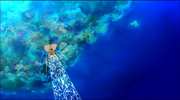



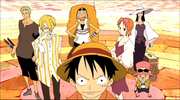
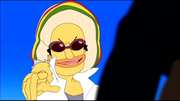
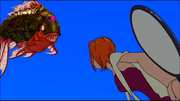
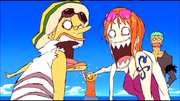
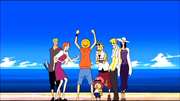
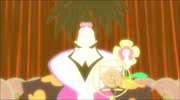

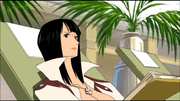

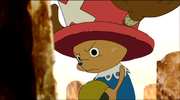
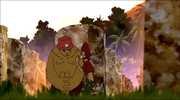
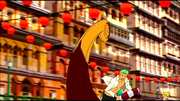

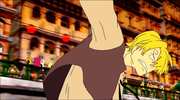
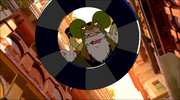
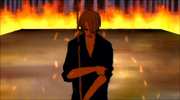






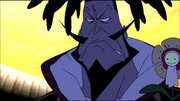
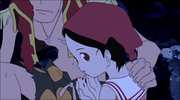
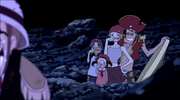
































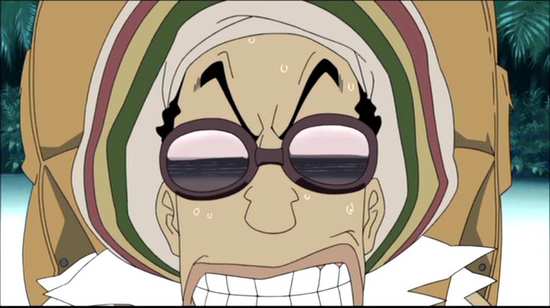
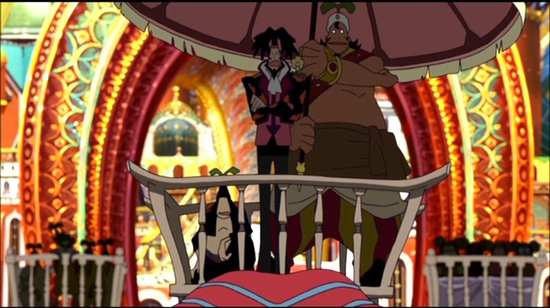


















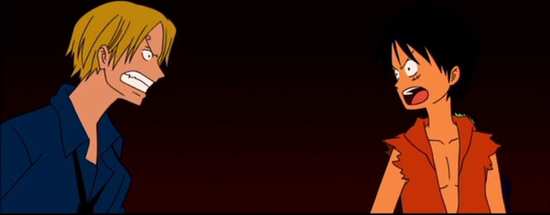
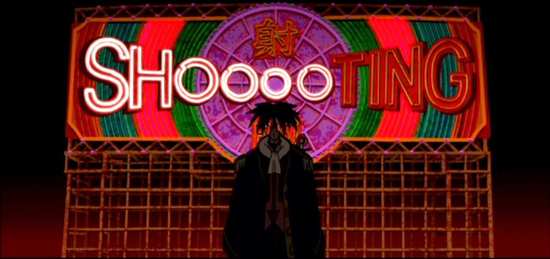




Your Opinions and Comments
Be the first to post a comment!